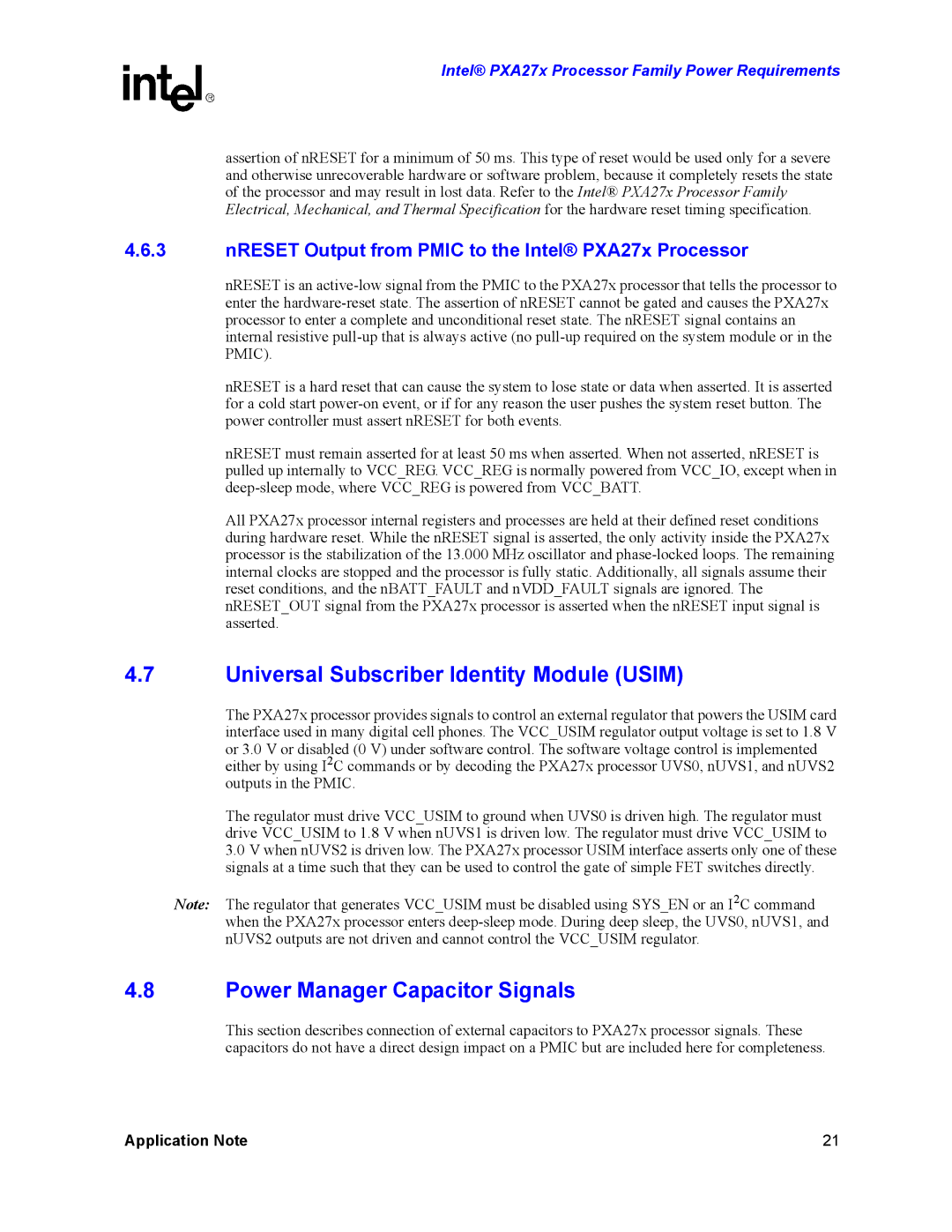Intel® PXA27x Processor Family Power Requirements
assertion of nRESET for a minimum of 50 ms. This type of reset would be used only for a severe and otherwise unrecoverable hardware or software problem, because it completely resets the state of the processor and may result in lost data. Refer to the Intel® PXA27x Processor Family Electrical, Mechanical, and Thermal Specification for the hardware reset timing specification.
4.6.3nRESET Output from PMIC to the Intel® PXA27x Processor
nRESET is an
nRESET is a hard reset that can cause the system to lose state or data when asserted. It is asserted for a cold start
nRESET must remain asserted for at least 50 ms when asserted. When not asserted, nRESET is pulled up internally to VCC_REG. VCC_REG is normally powered from VCC_IO, except when in
All PXA27x processor internal registers and processes are held at their defined reset conditions during hardware reset. While the nRESET signal is asserted, the only activity inside the PXA27x processor is the stabilization of the 13.000 MHz oscillator and
4.7Universal Subscriber Identity Module (USIM)
The PXA27x processor provides signals to control an external regulator that powers the USIM card interface used in many digital cell phones. The VCC_USIM regulator output voltage is set to 1.8 V or 3.0 V or disabled (0 V) under software control. The software voltage control is implemented either by using I2C commands or by decoding the PXA27x processor UVS0, nUVS1, and nUVS2 outputs in the PMIC.
The regulator must drive VCC_USIM to ground when UVS0 is driven high. The regulator must drive VCC_USIM to 1.8 V when nUVS1 is driven low. The regulator must drive VCC_USIM to
3.0V when nUVS2 is driven low. The PXA27x processor USIM interface asserts only one of these signals at a time such that they can be used to control the gate of simple FET switches directly.
Note: The regulator that generates VCC_USIM must be disabled using SYS_EN or an I2C command when the PXA27x processor enters
4.8Power Manager Capacitor Signals
This section describes connection of external capacitors to PXA27x processor signals. These capacitors do not have a direct design impact on a PMIC but are included here for completeness.
Application Note | 21 |
